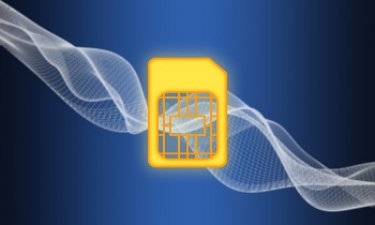

iTWire - More than 6b eSIM-capable devices expected in next five years
source link: https://www.itwire.com/mobility/more-than-6b-esim-capable-devices-expected-in-next-five-years.html
Go to the source link to view the article. You can view the picture content, updated content and better typesetting reading experience. If the link is broken, please click the button below to view the snapshot at that time.

Thursday, 17 December 2020 09:13
More than 6b eSIM-capable devices expected in next five years
By Sam VargheseMore than six billion eSIM-capable devices will be shipped over the next five years, the technology research firm Counterpoint Research has forecast, adding that this would include those using both eUICC and iUICC technologies.
The firm said that there were many reasons for the use of eSIMS — flexibility, cost-efficiency, and security among others — and this would lead to many connected devices using them over the next decade.
“The eSIM enablement space continues to hum with activity, with an array of companies offering eSIM solutions for diverse applications," said Counterpoint senior analyst Karan Dasaor.
"These companies fall into three broad categories: eUICC OS embedded in a hardware-based tamper proof MFF2 or Wafer Level Chip Scale Packaging (WLCSP), miniaturised leadless package form-factors soldered into the PCBs; software-based eUICC in a TEE (Trusted Execution Environment), sometimes called soft-SIM or virtual SIM; and the relatively newer integrated UICCs, also called iSIM or iUICC, where the iUICC OS is integrated into a secure enclave within the System-on-Chip (SoC).”
The firm said companies such as Thales, G+D (Giesecke and Devrient), IDEMIA and VALID were the leading hardware-based eSIM enablement players integrating their GSMA-compliant eUICC OS into the MFF2/WLCSP chipsets supplied by the likes of ST Micro, Infineon and NXP.
Players like Truphone, Kigen (Arm spinoff), Oasis and RedteaMobile have also partnered with chipset players, module vendors, device OEMs and MNOs to offer eSIM and iSIM solutions.
Dasaor added: “As it stands, only the hardware-based MFF2 and WLCSP form-factors are compliant with the security standards defined in GSMA’s SGPv.01/02/21/22 specs. Vendors engaged in supplying these chips are required to be GSMA SAS-UP (Security Accreditation Scheme for UICC Production) certified.
"Non-compliant proprietary software-based eSIM solutions (mostly iSIM and soft-SIM) are available from various ecosystem players, including component vendors, device manufacturers and operators.
"The iSIM is seeing rising adoption, particularly in IoT applications, and is being evaluated to make it a part of GSMA specifications in future. On the other hand, the soft-SIM has seen greater adoption in markets such as China, within smartphones for international roaming services monetisation by OEMs, and in IoT applications which are not that security sensitive.”
Regarding future evolution of eSIM form-factors, research director Dale Gai said: “Players such as Sony Semiconductor (Altair Semi), Sequans and Qualcomm have played a key role in driving iUICC implementations in partnership with different ecosystem players to bring iSIM solutions across IoT applications.
"As we move towards the iSIM era, players designing SoCs, from Qualcomm to MediaTek to Apple, will dominate and drive the integrated SIM capabilities within their chipsets, helping save board space, and have more control with the ability to scale across consumer, mobility and IoT applications.”
Subscribe to ITWIRE UPDATE Newsletter here
Now’s the Time for 400G Migration
The optical fibre community is anxiously awaiting the benefits that 400G capacity per wavelength will bring to existing and future fibre optic networks.Nearly every business wants to leverage the latest in digital offerings to remain competitive in their respective markets and to provide support for fast and ever-increasing demands for data capacity. 400G is the answer.
Initial challenges are associated with supporting such project and upgrades to fulfil the promise of higher-capacity transport.
The foundation of optical networking infrastructure includes coherent optical transceivers and digital signal processing (DSP), mux/demux, ROADM, and optical amplifiers, all of which must be able to support 400G capacity.
With today’s proprietary power-hungry and high cost transceivers and DSP, how is migration to 400G networks going to be a viable option?
PacketLight's next-generation standardised solutions may be the answer. Click below to read the full article.
WEBINAR PROMOTION ON ITWIRE: It's all about webinars
These days our customers Advertising & Marketing campaigns are mainly focussed on webinars.If you wish to promote a Webinar we recommend at least a 2 week campaign prior to your event.
The iTWire campaign will include extensive adverts on our News Site itwire.com and prominent Newsletter promotion https://www.itwire.com/itwire-update.html and Promotional News & Editorial.
This coupled with the new capabilities 5G brings opens up huge opportunities for both network operators and enterprise organisations.
We have a Webinar Business Booster Pack and other supportive programs.
We look forward to discussing your campaign goals with you.
Recommend
About Joyk
Aggregate valuable and interesting links.
Joyk means Joy of geeK
